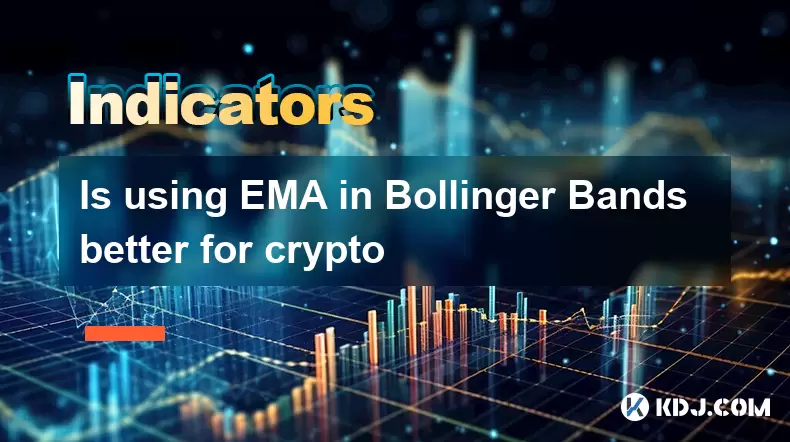-
 Bitcoin
Bitcoin $118,698.3676
0.16% -
 Ethereum
Ethereum $3,428.4877
5.97% -
 XRP
XRP $3.2496
9.52% -
 Tether USDt
Tether USDt $1.0002
0.00% -
 BNB
BNB $725.6930
4.36% -
 Solana
Solana $174.8923
4.52% -
 USDC
USDC $0.9997
-0.02% -
 Dogecoin
Dogecoin $0.2139
6.02% -
 TRON
TRON $0.3155
4.62% -
 Cardano
Cardano $0.8045
7.12% -
 Hyperliquid
Hyperliquid $46.6582
-1.72% -
 Stellar
Stellar $0.4676
0.80% -
 Sui
Sui $4.0143
0.38% -
 Chainlink
Chainlink $17.1546
2.97% -
 Hedera
Hedera $0.2458
3.27% -
 Bitcoin Cash
Bitcoin Cash $496.5967
-0.06% -
 Avalanche
Avalanche $22.8813
3.13% -
 Shiba Inu
Shiba Inu $0.0...01439
3.42% -
 UNUS SED LEO
UNUS SED LEO $8.8389
0.42% -
 Toncoin
Toncoin $3.2113
2.82% -
 Litecoin
Litecoin $101.2646
4.24% -
 Polkadot
Polkadot $4.2262
2.32% -
 Monero
Monero $340.4295
2.92% -
 Pepe
Pepe $0.0...01365
2.92% -
 Uniswap
Uniswap $8.9702
-2.78% -
 Bitget Token
Bitget Token $4.7675
2.00% -
 Dai
Dai $0.9998
-0.02% -
 Ethena USDe
Ethena USDe $1.0003
-0.04% -
 Aave
Aave $324.6394
-2.11% -
 Bittensor
Bittensor $433.6051
-0.88%
Is using EMA in Bollinger Bands better for crypto
Using EMA in Bollinger Bands offers faster, more responsive signals for crypto traders navigating volatile markets.
Jul 14, 2025 at 02:29 am

Understanding EMA and Bollinger Bands
Exponential Moving Average (EMA) is a type of moving average that places a greater weight on recent price data. In the context of Bollinger Bands, which are volatility indicators used in technical analysis, traders traditionally use the Simple Moving Average (SMA) as the central line around which the bands are plotted. However, some traders prefer substituting SMA with EMA to enhance responsiveness to recent price movements.
In the cryptocurrency market, where prices can swing rapidly due to news events or market sentiment, using EMA in place of SMA within Bollinger Bands may provide quicker signals. This adjustment could potentially help traders capture trends earlier than they would with traditional settings.
EMA reacts faster to price changes compared to SMA, making it more suitable for fast-moving crypto markets.
How Bollinger Bands Work with EMA
Bollinger Bands typically consist of three lines:
- A central moving average line
- An upper band calculated by adding a multiple of standard deviations to the central line
- A lower band calculated by subtracting a multiple of standard deviations from the central line
When using EMA, the central line becomes an Exponential Moving Average, often set at 20 periods. The upper and lower bands remain two standard deviations away from this EMA line.
This configuration results in bands that adjust more quickly to price action. For instance, during a sudden bullish surge in a cryptocurrency like Bitcoin, the EMA-based Bollinger Bands will contract or expand faster than those based on SMA, offering traders tighter entry and exit zones.
Advantages of Using EMA in Crypto Trading
Cryptocurrencies are known for their high volatility. Traditional Bollinger Bands using SMA might lag behind current price movements, especially during sharp rallies or crashes.
By replacing SMA with EMA:
- Traders receive earlier signals when price momentum shifts
- The indicator adapts better to sudden market changes
- It can filter out some noise present in SMA-based setups
For example, during a strong downtrend in Ethereum, the EMA-based Bollinger Band might show a contraction sooner, signaling potential consolidation or reversal areas more promptly than its SMA counterpart.
Practical Steps to Implement EMA-Based Bollinger Bands
To configure Bollinger Bands with EMA on popular trading platforms such as TradingView or Binance:
- Open the chart of your preferred cryptocurrency
- Navigate to the indicators section
- Select Bollinger Bands
- Modify the settings to change the MA Type from SMA to EMA
- Set the period (typically 20) and deviation (usually 2)
Here’s how to do it step-by-step:
- Go to the "Indicators" menu
- Search for "Bollinger Bands"
- Click on the settings icon next to the indicator
- Under "MA Type", choose "EMA"
- Adjust the length and deviation if needed
- Apply the changes
Once implemented, observe how the bands react to real-time price swings in assets like Litecoin or Solana. You may notice tighter bands during sideways movement and wider ones during breakouts.
Interpreting EMA-Based Bollinger Band Signals
When using EMA instead of SMA, interpretation follows similar logic but with heightened sensitivity:
- Price touching or crossing the upper band may indicate overbought conditions
- Price nearing the lower band might signal oversold territory
- Sudden expansions in band width suggest increasing volatility
However, because EMA responds more quickly, false signals may occur more frequently during choppy or range-bound crypto markets. Traders should combine this tool with other confirmatory indicators like RSI or volume profiles to avoid premature entries or exits.
Common Misconceptions and Pitfalls
Some traders assume that switching to EMA automatically improves performance across all market conditions. While EMA enhances reactivity, it doesn’t guarantee accuracy. In ranging or consolidating markets, EMA-based Bollinger Bands may give misleading signals, causing traders to enter trades prematurely.
Another common mistake is not adjusting other parameters alongside the MA type. If you switch to EMA, consider modifying the standard deviation or period length to suit the specific crypto asset you're analyzing.
Also, remember that no single indicator provides foolproof signals. Always backtest any strategy using historical data before applying it in live trading environments.
Frequently Asked Questions (FAQs)
Q: Can I use different EMA periods for Bollinger Bands in crypto trading?
Yes, while the default is usually 20-period EMA, you can experiment with shorter or longer EMAs depending on your trading style and the volatility of the cryptocurrency you're analyzing. Shorter EMAs make the bands more reactive, while longer EMAs smooth out the data.
Q: Is EMA-based Bollinger Band suitable for all cryptocurrencies?
Not necessarily. Highly volatile altcoins might benefit more from EMA adjustments due to their erratic price behavior, whereas major coins like Bitcoin or Ethereum may require additional filters for optimal results.
Q: How does EMA compare to other moving averages like WMA in Bollinger Bands?
While EMA gives more weight to recent prices, Weighted Moving Average (WMA) also emphasizes newer data but in a linear fashion. In crypto trading, EMA tends to be more commonly used due to its balance between responsiveness and simplicity.
Q: Do professional crypto traders prefer EMA over SMA in Bollinger Bands?
Many professionals opt for EMA due to its ability to adapt quickly to new information. However, preferences vary based on individual strategies, timeframes, and risk tolerance levels. Some traders even combine both types for confirmation purposes.
Disclaimer:info@kdj.com
The information provided is not trading advice. kdj.com does not assume any responsibility for any investments made based on the information provided in this article. Cryptocurrencies are highly volatile and it is highly recommended that you invest with caution after thorough research!
If you believe that the content used on this website infringes your copyright, please contact us immediately (info@kdj.com) and we will delete it promptly.
- Silver Breaks 14-Year High: What's Driving the Rally?
- 2025-07-17 22:50:13
- Ozak AI, Stellar (XLM), and Solana (SOL): The New Crypto Watchlist Stars
- 2025-07-17 23:50:12
- Grok AI, Meme Coins, and Dogecoin: What's the Hype in 2025?
- 2025-07-17 23:10:11
- Meme Coins, AI Tokens & Whale Accumulation: What's Hot in Crypto?
- 2025-07-17 23:15:11
- C2 Blockchain, DOG Coins, and Acquisition: A Meme-Native Bitcoin Asset
- 2025-07-17 20:30:12
- DeFi Evolution: Hyperion, HYPE Token, and the Hyperliquid Ecosystem
- 2025-07-17 21:30:12
Related knowledge

Advanced RSI strategies for crypto
Jul 13,2025 at 11:01am
Understanding the Basics of RSI in Cryptocurrency TradingThe Relative Strength Index (RSI) is a momentum oscillator used to measure the speed and chan...

Crypto RSI for day trading
Jul 12,2025 at 11:14am
Understanding RSI in the Context of Cryptocurrency TradingThe Relative Strength Index (RSI) is a momentum oscillator used to measure the speed and cha...

Crypto RSI for scalping
Jul 12,2025 at 11:00pm
Understanding RSI in the Context of Crypto TradingThe Relative Strength Index (RSI) is a momentum oscillator widely used by traders to measure the spe...

What does an RSI of 30 mean in crypto
Jul 15,2025 at 07:07pm
Understanding RSI in Cryptocurrency TradingRelative Strength Index (RSI) is a momentum oscillator widely used in cryptocurrency trading to measure the...

What does an RSI of 70 mean in crypto
Jul 13,2025 at 06:07pm
Understanding the RSI Indicator in Cryptocurrency TradingThe Relative Strength Index (RSI) is a widely used technical analysis tool that helps traders...

Does RSI work in a bear market for crypto
Jul 16,2025 at 01:36pm
Understanding RSI in Cryptocurrency TradingThe Relative Strength Index (RSI) is a momentum oscillator used by traders to measure the speed and change ...

Advanced RSI strategies for crypto
Jul 13,2025 at 11:01am
Understanding the Basics of RSI in Cryptocurrency TradingThe Relative Strength Index (RSI) is a momentum oscillator used to measure the speed and chan...

Crypto RSI for day trading
Jul 12,2025 at 11:14am
Understanding RSI in the Context of Cryptocurrency TradingThe Relative Strength Index (RSI) is a momentum oscillator used to measure the speed and cha...

Crypto RSI for scalping
Jul 12,2025 at 11:00pm
Understanding RSI in the Context of Crypto TradingThe Relative Strength Index (RSI) is a momentum oscillator widely used by traders to measure the spe...

What does an RSI of 30 mean in crypto
Jul 15,2025 at 07:07pm
Understanding RSI in Cryptocurrency TradingRelative Strength Index (RSI) is a momentum oscillator widely used in cryptocurrency trading to measure the...

What does an RSI of 70 mean in crypto
Jul 13,2025 at 06:07pm
Understanding the RSI Indicator in Cryptocurrency TradingThe Relative Strength Index (RSI) is a widely used technical analysis tool that helps traders...

Does RSI work in a bear market for crypto
Jul 16,2025 at 01:36pm
Understanding RSI in Cryptocurrency TradingThe Relative Strength Index (RSI) is a momentum oscillator used by traders to measure the speed and change ...
See all articles

























































































